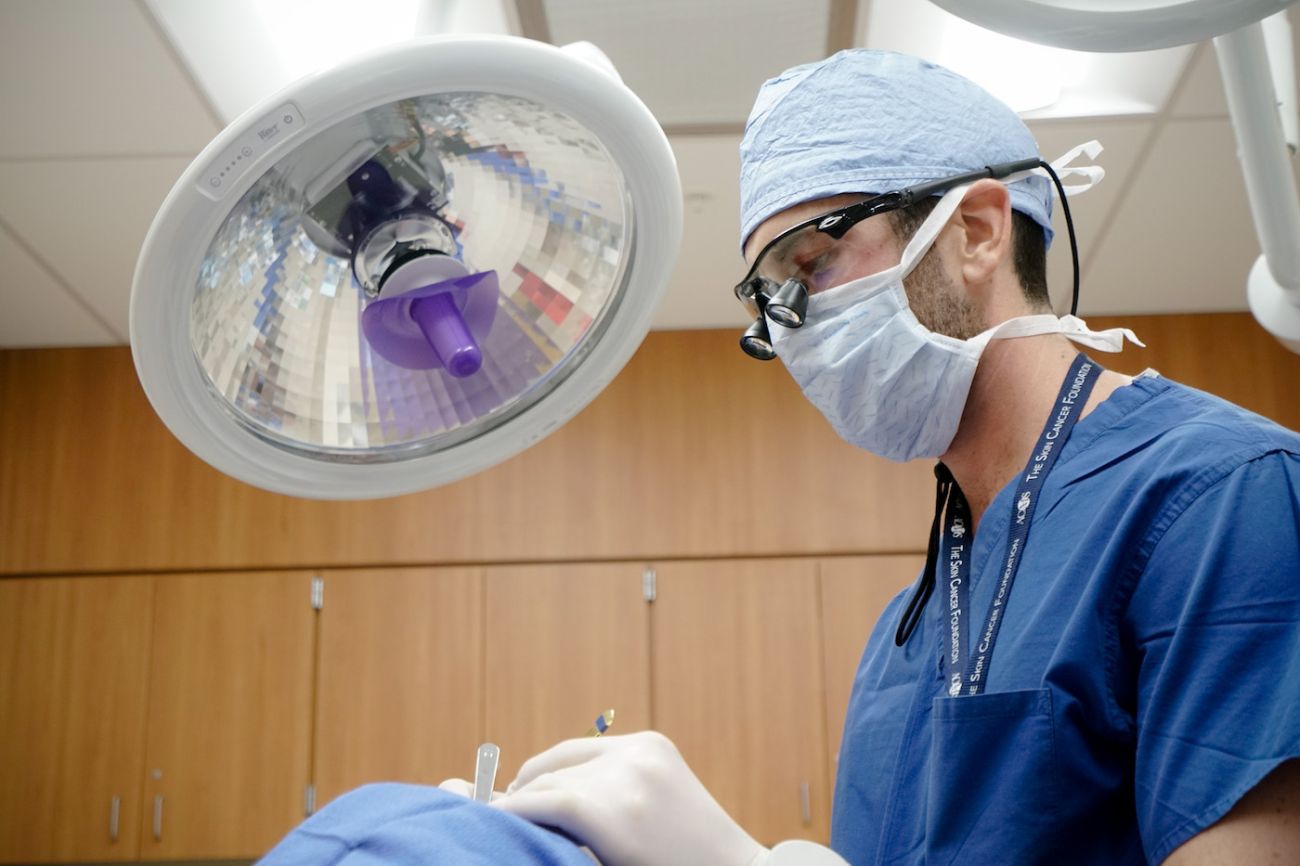Atypical fibroxanthoma is a type of sarcoma that occurs on the skin however it is usually low grade, less aggressive type of cancer. It often appears as a red nodule or plaque and occurs most often on the head and neck. This type of cancer is extremely rare, accounting for less than 0.2% of all skin cancers. It is usually benign.
What causes atypical fibroxanthoma?
Atypical fibroxanthoma (AFX) is linked to radiation exposure, including ultraviolet radiation from the sun and x-ray radiation. Both forms of radiation can cause the abnormal growth of atypical cells known as spindle cells.
AFX is also associated with aging; the average age at diagnosis is 69 and it appears to be more common in men than in women. It can occur in younger patients, and on other parts of the body that are not overexposed to UV radiation, but this is even more rare. Those diagnosed with acquired immune deficiency syndrome (AIDS) or are immunosuppressed in other ways — after organ transplantation, for example — are also at risk, but again this is very uncommon.
Our dermatologists have experience in diagnosing rare types of cancer — including AFX.
What are the symptoms of atypical fibroxanthoma?
Atypical fibroxanthoma lesions most often appear in the typical areas that may have been overexposed to the sun over the course of a lifetime, such as:
- Scalp
- Cheeks
- Nose
- Ears
- Back of the neck
- Shoulders
These tumors are four times more likely on the head and neck than other body areas. They may also appear on skin that has received previous radiotherapy treatment.
What does atypical fibroxanthoma look like?
This condition typically appears as a single bump or plaque on the skin with the following features:
- Red, moist, dome-shaped nodule
- May bleed, ulcerate and crust over
- Painless
- Appears small at first, but may grow quickly over the next six months
- May grow to 2 to 3 centimeters in size
While AFX can grow rapidly, it is not considered an aggressive type of skin cancer.
How is atypical fibroxanthoma diagnosed?
Because it is so rare and can grow quickly, AFX may be misdiagnosed as another form of skin cancer. This can sometimes lead to unnecessary surgery and radiation treatments.
For that reason, all skin cancers should be examined by a dermatologist with key experience in cancer, including rare types like atypical fibroxanthoma. The physician will typically sample some cells for biopsy to properly identify the cancer type.
What is the treatment for atypical fibroxanthoma?
Though usually benign, atypical fibroxanthoma tumors can grow large and become unsightly on visible parts of the head and neck. Most patients prefer to have them removed.
Mohs micrographic surgery is the preferred treatment for a majority of lesions. Mohs surgery is proven to remove the least amount of healthy tissue while still being highly successful at removing the lesion completely and permanently, with the least scarring and best cosmetic outcome. Larger, recurrent or more problematic tumors may require standard surgical techniques for complete removal including staged resection to ensure negative margins, a process referred to as “slow Mohs.”
Will atypical fibroxanthoma come back?
Atypical fibroxanthoma rarely recurs after being completely removed, with clear margins. Therefore, the cure rate is virtually 100%. However, patients should avoid sun exposure to the head, neck and back in order to limit the chance of developing new growths.
With all types of skin cancer, it is critical that you receive an accurate diagnosis and treatment at a comprehensive cancer center like Roswell Park, where our experts have experience with very rare conditions such as AFX.
